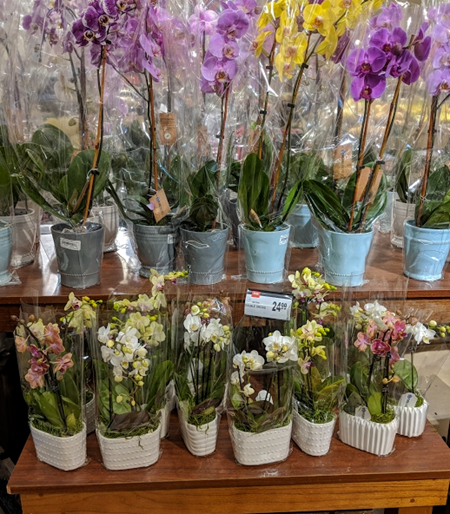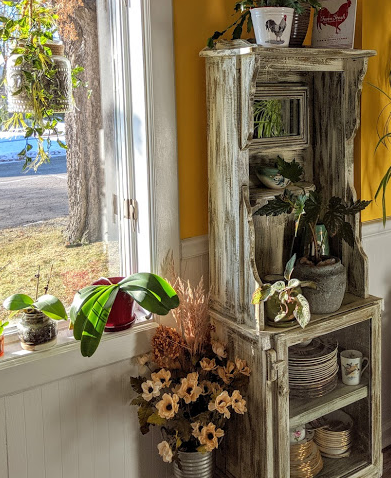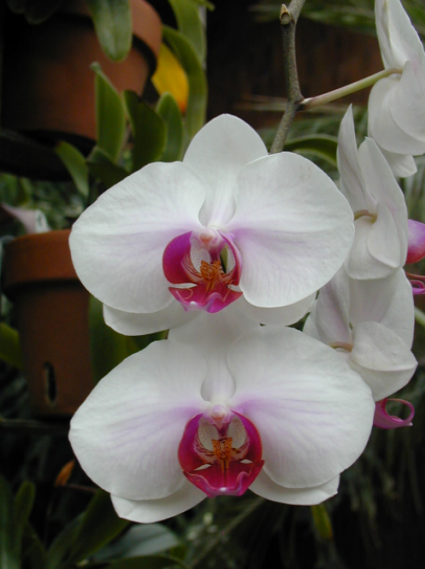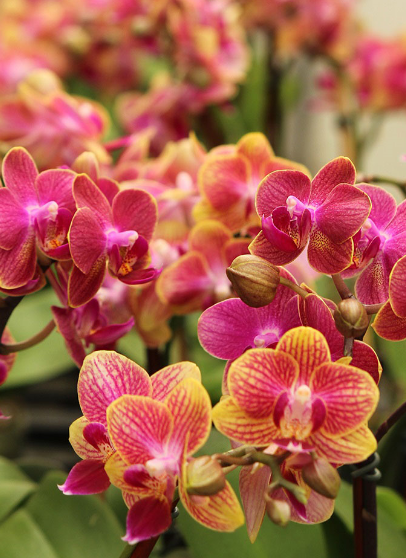Click below to listen to my 2 min. Garden Bite radio show: Orchid care
Did you receive an orchid as a gift this season? Phalaenopsis orchids are the most popular indoor houseplant gift. Catching your eye in the produce aisle of the grocery store or in local garden centers, they can often be an impulse buy.

The good news is they are relatively easy care. Light and watering, however, are always an issue with houseplants.
The American Orchid Society recommends using a pencil or wooden skewer to determine whether an orchids needs to be watered. Overwatering leads to more orchid death than underwatering! If the stick is dark with moisture, don’t water!

Are you having trouble with your orchid reblooming? I am… Insufficient light is the most common cause of failure to re-bloom. Leaf color indicates if the amount of light is adequate. The lush, rich, dark green of most houseplants is not desirable in orchid leaves.

A grassy green color (light or medium green with yellowish tones) means the plant is receiving sufficient light to bloom. Mine are more dark green. I need to move it, stat!

As for re-potting your orchid: Orchid plants need re-potting when the potting mix breaks down, often evidenced by dead roots, or the plant is outgrowing the container. I came across this video from Brad’s Greenhouse & Gardening and it’s really helpful!
Part way through the video he talks about those spikes – cut them off.
In the first case, simply replace the growing medium. In the second case, you may need a larger pot and use fresh growing medium. A good general rule of thumb is to pot for the bottom of the plant, the root system, and not for the top, the foliage. As for that growing media, a fresh, fast-draining, but water-retentive medium is recommended. That could be a bark-based mix or a peat-based mix. Look at the package.

